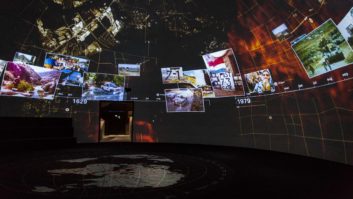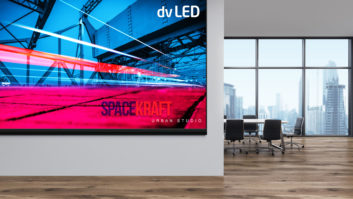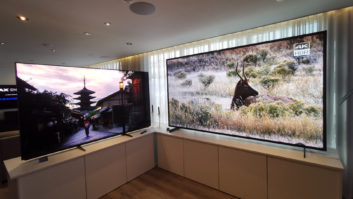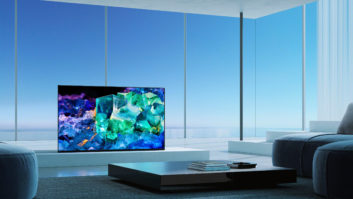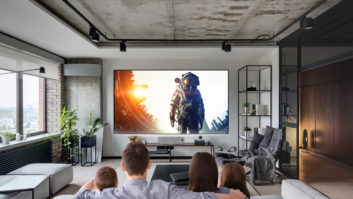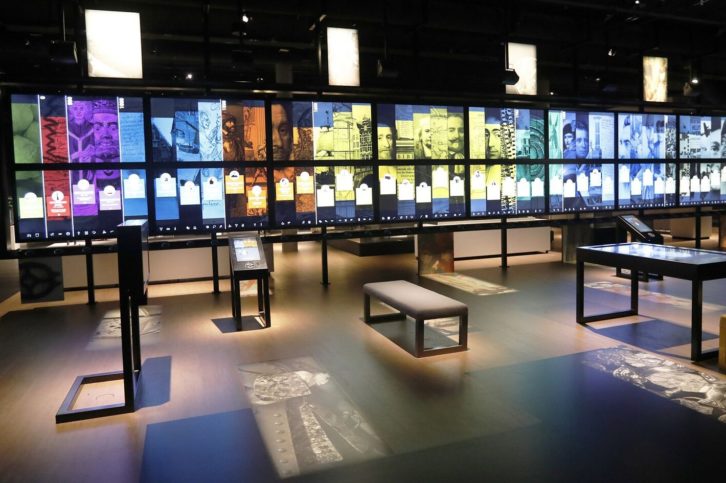
If you discount magic lanterns, the Gretag Eidophor, epidiascopes and so on – and pass over the widely unloved overhead projector – the history of projection began around 30 years ago when Epson and Sharp launched their first data/video projectors in 1989. For a very long time: if you wanted to put a large, moving image on a screen, these new projectors were the only show in town.
But then flat panel displays happened. Not only did they happen: they took the world by storm with enormous improvements in image quality and no less enormous reductions in price on what seemed like a monthly basis. And: they were sexy.
In the face of such compelling competition, you might have expected projectors to be pretty much dead in the water. Not so.
Resilient
“Overall the market has been pretty resilient given the number of technologies that have targeted this space, and the economic issues that are plaguing this market,” notes Rosemary Abowd, senior analyst at PMA Research.
But: the top level figures show projector unit sales down in the first half of 2019 by 6% year on year. In what way is that “resilient”? Abowd explains that the World Cup in 2018 caused a significant spike in projector sales, so it’s far from an apples-to-apples comparison.
Revenues are, however, only down by 0.3% year on year – essentially, flat. “Buyers are purchasing higher-lumen projectors to get laser phosphor illumination, for example, so revenues have been relatively steady,” she continues. “And: there were several segments of the market that showed strong growth, including the professional laser phosphor segment that nearly doubled in size in 1H2019 versus 1H2018.”
“Overall the market has been pretty resilient given the number of technologies that have targeted this space”
Rosemary Abowd, PMA Research
Projector manufacturers are, then, obviously not lying down and playing dead in the face of alternative display technologies. While there have been few significant breakthroughs since the advent of 4K/Ultra HD resolution and solid state illumination – although Digital Projection did launch its INSIGHT Laser 8K resolution projector – there are still plenty of opportunities for innovation.
Focused
“Right now, the industry is very focused on trying to make projectors smaller, lighter and more energy efficient, whilst maintaining a high level of brightness and resolution,” points out Colin Boyle, who is European projector specialist at Canon.
“Our focus has been on driving our brightness levels even higher – beyond 30,000 lumens,” adds Hans Dummer, director – visual instruments EMEAR at Epson Europe. “We’ve also seen an accelerated shift from lamp-based to laser-based light sources.”
It’s important to recall that, while solid state illumination – which includes laser-based, LED-based and hybrid laser/LED-based – is now firmly entrenched as an illumination source, it too is being developed: not all SSI projectors are the same.
“Over the past two years, the laser light source has become increasingly feasible thanks to the advancing performance of the laser diode’s capacity,” says Julia Lin, EMEA product marketing manager at Vivitek. “The light output per wattage efficiency of a laser diode is improving greatly.”
She also notes what she describes as “impressive progress” with single chip DLP in an Ultra HD/4K environment, providing a more cost-effective and much smaller solution than the traditional three-chip architecture.
Growing affordability
It would be easy to write off lamp-based projectors as yesterday’s technology – but, according to Abowd, who notes the growing affordability of SSI-based projectors, that’s really not the case.
“There is still a large number of lamp projectors being sold, but those projectors may be sold with a replacement bulb included in the sale or with extended warranties that cover replacement bulbs to keep these projectors competitive against solid-state solutions,” she says, pointing out that price-sensitive markets like education continue to favour the lowest-cost option – especially with FPDs having a price tag around twice as high (although she points out that FPDs have enjoyed greater success in education in Europe than in other markets).
And, while projected image quality continues to be light years beyond what was imaginable not many years ago, it too is a moving target. “As brightness and resolution increase, image artefacts become more visible, increasing the need for advanced image processing that can cope with this,” believes Ignace Rombaut, vice president of projection at Barco. “And, last but not least, colour science has become much more important. With solid state illumination, there is an opportunity to improve colour saturation significantly – if you do it well.”
Brightness, size, image quality, improved cost of ownership – these are all trajectories that the projector industry has long been following. Others, however, are beating a slightly different path.
www.barco.com
www.canon-europe.com
www.epson.com
www.pmaresearch.com
www.vivitek.eu


